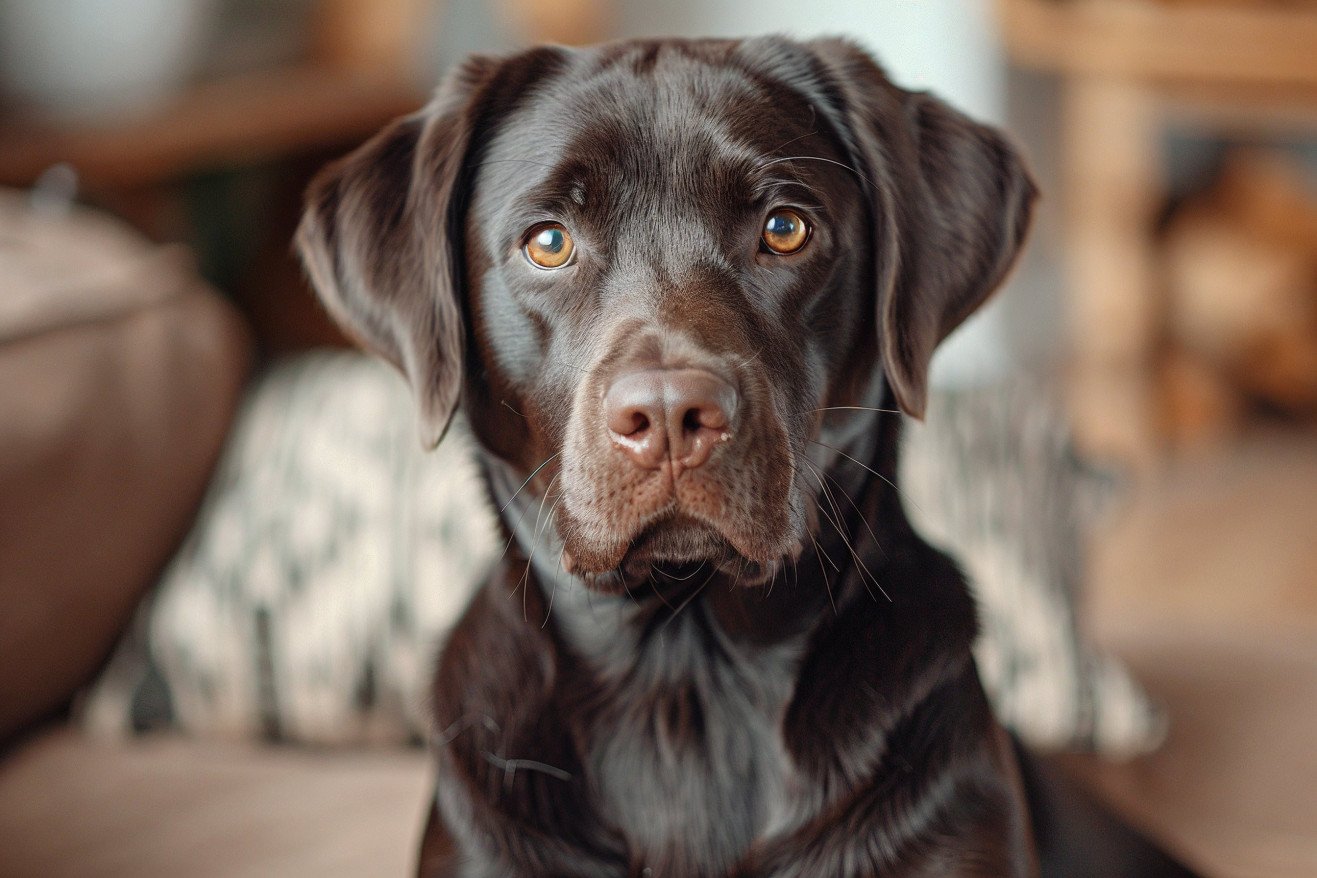Do Labrador Retrievers Have Hypoallergenic Qualities? What the Research Says
28 April 2024 • Updated 27 April 2024

If you have allergies and are thinking about getting a Labrador Retriever, you may be wondering if this popular dog breed is hypoallergenic. The short answer is no, Labrador Retrievers are not hypoallergenic. Like all dogs, Labs produce allergens in their dander (dead skin flakes), saliva and urine. That said, some people are less sensitive to the allergens produced by dogs that shed less and have lower levels of allergens. Labradors are moderate shedders and their allergen levels are in the middle of the pack compared to other dogs.
To understand more about dog allergies and why some dogs are more hypoallergenic than others, we will look at scientific research that has investigated the proteins in pet dander that cause allergic reactions. By examining the research on shedding, allergen levels, and the effectiveness of breeding dogs to be hypoallergenic, you will be able to determine if a Labrador Retriever may be a good option for you even if you have allergies.
Are Labrador Retrievers hypoallergenic?
What Causes Dog Allergies?
Dog allergies are caused by proteins in a dog's dander (dried skin flakes), saliva, and urine. It is the dander, not the fur itself, that is the main trigger for pet allergies which can occur with any furry animal according to Mayo Clinic.
Sensitivities can be highly individual, with some people allergic to certain breeds but not others according to VCA Animal Hospitals. A dog's breed, sex, and skin health can all affect the amount of allergens they produce. For example, Everyday Health explains that dogs with drier skin, like German Shepherds, may produce more dander.
Dog allergy symptoms are similar to those of other common allergies and include sneezing, a runny nose, itchy eyes, and asthma-like symptoms according to Mayo Clinic. While no dog is completely hypoallergenic, knowing what causes allergies can help you better control your exposure and response to allergens.
The Idea of Hypoallergenic Dog Breeds
There is no such thing as a truly hypoallergenic dog breed that is completely allergen-free, according to Scientific American. That said, some breeds, like Poodles, Schnauzers, and Bichons, are considered less allergenic because they shed less and produce fewer allergens, according to Riviera Allergy.
However, even dogs within these breeds can produce allergens that cause allergic reactions in some people, and the amount of allergens they produce can vary, according to The Atlantic. Meanwhile, many claims about 'hypoallergenic' mixed-breed dogs are a result of marketing, as the allergenicity of dogs can vary even within the same breed.
The Peruvian Hairless Dog, which doesn't shed, can still produce allergenic proteins through its skin, according to Scientific American, which means even hairless breeds may not be allergen-free.
Breed-Specific Allergen Levels and Factors
Research has shown that there is a lot of variation in allergen levels between dog breeds. A study published in PubMed found that Labradors had lower levels of the major dog allergen Can f 1 than breeds like Yorkshires and Poodles. This same study found that male dogs produce more allergens than female dogs and that dogs with skin conditions like seborrhea have higher allergen levels.
On the other hand, a study published in PMC that looked at popular Korean dog breeds found no significant differences in Can f 1 levels between breeds. This study also found that hair length and hormonal status didn't seem to have a significant impact on allergen levels.
Despite the common assumption, there is no scientific evidence to support the idea of 'hypoallergenic' breeds when it comes to allergenicity, as VCA Animal Hospitals explains. Although some breeds may have lower allergen levels, the amount of individual variation means that no dog can be considered allergen-free.
How to Deal With Dog Allergies: Tips and Tricks
Although no dog is hypoallergenic, there are several ways that people with dog allergies can reduce their exposure to allergens and alleviate their symptoms. The Humane Society notes that bathing and grooming dogs regularly can help lower the amount of dander and other allergens in the home. In addition, using HEPA air filters, vacuuming often, and getting rid of carpets and rugs can help reduce the amount of allergens in the air.
Limiting dogs to certain areas of the house, such as keeping them out of the bedroom, can also help reduce exposure to allergens, as suggested by WebMD. In the case of severe allergies, WebMD explains that allergy medications, immunotherapy (allergy shots), and avoiding direct contact with dogs may be necessary.
Although it will require some effort, these tips can help people with allergies to dogs find ways to live with them. The goal is to find a combination of strategies that will help you manage your symptoms while still being able to enjoy life with a dog.
Best Dog Breeds for People With Allergies
While there is no such thing as a completely hypoallergenic dog, there are breeds that are often recommended for people with allergies. The American Kennel Club lists Poodles, Schnauzers, and Terriers as examples of breeds that are low-shedding and produce less dander. In general, smaller dogs are better for people with allergies because they produce less dander and saliva.
However, the only way to know if a dog will cause an allergic reaction is to spend time with it before adopting it, as The Spruce Pets explains. In addition, regardless of the breed, the American Kennel Club says that proper grooming, cleaning, and management can help reduce exposure to allergens. So while no dog is completely hypoallergenic, some breeds may be better than others for people with allergies who are willing to put in the work.
Conclusion: How to Make It Work If You Have Allergies
Although Labrador Retrievers are not hypoallergenic dogs, they can work for some people with allergies if they are willing to take the necessary steps to manage their symptoms. No dog is completely allergen-free, but some breeds may be better than others for people with dog allergies.
The most important thing is to assess each situation individually. It is important to spend time with a dog before adopting it to see if you have an allergic reaction to that specific animal. In addition, there are some practical steps that can be taken to minimize allergens, such as bathing the dog regularly, using HEPA air filters, and keeping the dog out of the bedroom.
Although it may be more difficult, many people with allergies are still able to enjoy the benefits of having a dog if they are willing to take the necessary steps and find the right dog. By learning more about the science of dog allergies and taking a proactive approach to managing their symptoms, many people can enjoy the love and companionship of a pet dog.


